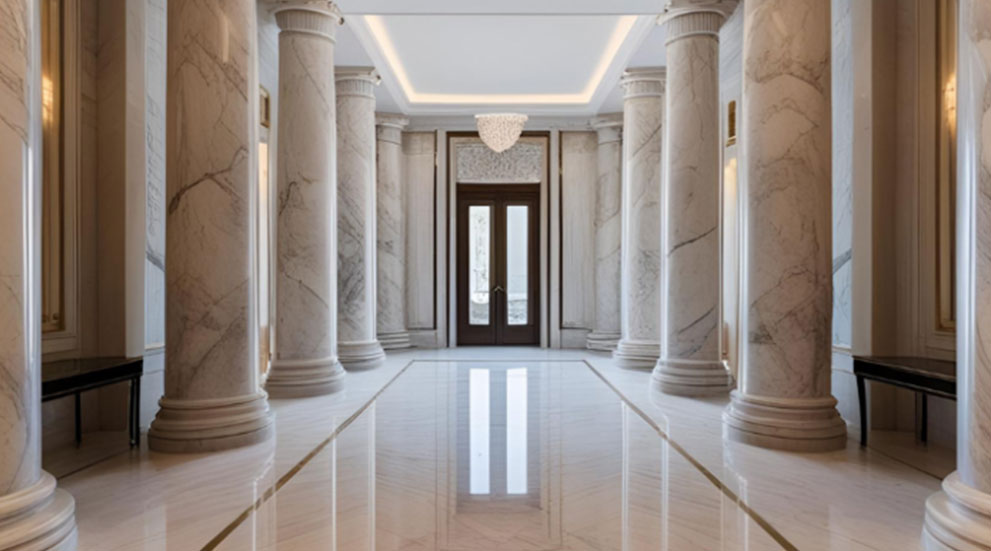Marble: A Symbol of Luxury and Elegance in Palaces and High-End Hotels
Since ancient times, marble has been closely associated with luxury and natural beauty. It is one of the most refined materials used in architectural design, renowned for its durability and unique aesthetics. It’s no exaggeration to say that marble has become a true symbol of opulence—adding a sophisticated and elegant touch to interior spaces. From grand palaces to luxurious hotels, marble remains a key element in creating environments that reflect prestige and refinement. In this article, we explore how marble contributes to the atmosphere of luxury in palaces and hotels through its use in flooring, walls, surfaces, and columns.
Marble: A Longstanding Legacy of Luxury
Marble has long been associated with prestigious structures, especially throughout ancient civilizations. In Greek and Roman architecture, marble was used in temples and columns as a symbol of beauty and immortality. Since then, marble has remained a favored material in high-end architectural arts, becoming an essential element in constructing buildings that exude grandeur.
During the Islamic Golden Age, marble was widely used in mosques and palaces. Islamic architecture became known for intricate marble carvings and geometric designs, reflecting harmony and refined craftsmanship. These traditions continued through the centuries, and in modern times, marble has come to represent luxury in both exterior and interior architecture of elite hotels and palaces.
Marble Flooring: A Statement of Prestige
One of the most striking applications of marble is in flooring. Whether in royal palaces or five-star hotels, marble flooring is often the most visually impressive and practical option. Its glossy surface enhances the space and gives a sense of grandeur thanks to its natural sheen and reflective properties.
Marble floors reflect light, bringing brightness to the space. In luxury hotels, the marble floor is often the first detail guests notice. Walking into a marble-floored lobby or reception hall feels like entering a world of elegance. The gleaming surface gives the area a feeling of openness and brilliance.
Marble is also highly durable and resistant to scratches and friction, making it an excellent choice for high-traffic areas. Moreover, its smooth, cool texture provides comfort underfoot—enhancing the guest experience.
Aesthetic Value of Marble in Walls and Surfaces
When it comes to walls and surfaces, marble is a preferred choice in palaces and luxury hotels, particularly in spaces meant to impress. Marble-clad walls are used in grand halls, lobbies, and guest suites—offering unmatched visual appeal thanks to their natural veining and diverse colors.
One standout example is marble wall cladding in hotel lobbies or reception lounges, often featuring polished slabs or decorative tiles to create a striking visual backdrop. In palaces, marble is used to cover the walls of dining rooms, libraries, and royal chambers, crafting an atmosphere of majesty and exclusivity.
Additionally, marble is a top choice for surfaces like tabletops and desks in upscale interiors. A marble-topped table instantly elevates the decor and offers timeless beauty and durability—making it a practical and stylish material for luxury furniture.
Marble Columns: Strength Meets Beauty
Marble columns are iconic architectural elements in both palaces and high-end hotels. They serve both structural and decorative purposes, symbolizing strength, elegance, and opulence.
In hotels, marble columns are often found in grand lobbies and event halls, providing a classic visual statement and enhancing the luxury experience from the moment guests arrive. Their imposing presence and refined detailing contribute to a regal atmosphere.
In palaces, marble columns are central to the design of royal halls, gardens, and monumental entrances. These columns are meticulously selected and crafted to complement the overall aesthetic of the building—highlighting the luxury and prestige of the space.


